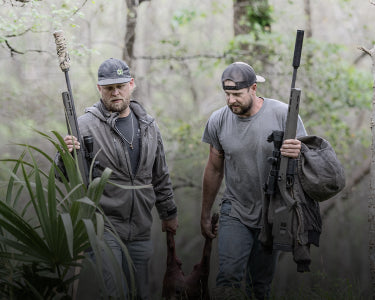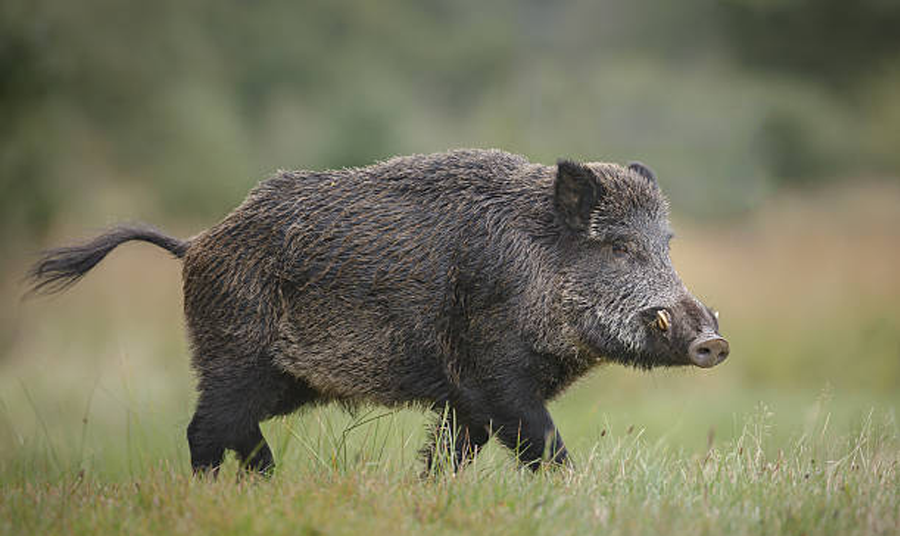As every southern boy knows, the arrival of feral pigs is both a blessing and a curse. The same animals that destroy over $1.5 billion worth of property and agricultural damage in the US every year give armed citizens a legitimate reason to exercise their Second Amendment on creatures that truly deserve to die. They also make fine eating.
The Feral Pig Problem in America
The omnivorous diet and size of the feral pig has placed it so high up on the food chain that the only challenges to it are very large predators and red-blooded Americans with guns. There was even an instance where a lone boar was able to fight off an entire pack of wolves by itself. The feral pig’s diet and its lack of natural predators are exactly what make it a problem to farmers and landowners in the rural south.
Feral pigs have been ravaging rural Southern states for centuries, and there are now about 6 million wild hogs in the United States and growing. By this logic, there should be roughly six pigs per every square mile of the US South. Of course, hunters aren’t finding feral hogs under every rock and behind every tree. This is because the invasive Eurasian wild boar has learned over the years that the humans they share their home with want to see them dead, and because we want them dead, the pigs were smart enough to live out the majority of their lives at night when we humans aren’t up and about.

Day vs. Night Behavior of Wild Hogs
While wild pigs who live in areas constantly hunted by humans tend to be active mostly at night, similar populations who live far away from busy towns and hunting ranches are bold enough to attack crops, fields, and livestock pens in broad daylight.
Environmental Damage Caused by Feral Hogs
Since feral pigs eat every shrub, grub, and mushroom that won’t poison them, they tend to dig for eatables under the topsoil. A large sounder can destroy an entire field by digging through the surface with their powerful hooves, exposing the helpful microorganisms that give the soil its nutrition and ruining the soil in the process. This behavior also causes soil erosion, and if it’s done near a water source, rooting can contaminate streams through sedimentation, impacting fish and other aquatic wildlife downstream.
Why Traditional Lights Don’t Work for Hog Hunting
Like criminals and teenagers, all of a feral pig’s destruction is done under cover of darkness. Hogs might not have good eyesight, but a particularly alert hog will notice someone shining a flashlight on them or near them. It won’t be because it will notice the color of the light, it’s more to do with the light’s intensity. To a colorblind boar, a bright patch of grass is still a bright patch of grass. This unnatural glowing terrain has the potential to scare away wild pigs, but this is mitigated through green and red lights, since both characters have relatively low brightness.
Thermal and Night Vision for Feral Pig Hunting
Night vision and thermal, however, are nearly undetectable. A hunter with a good thermal unit can detect heat signatures over a thousand yards away. While a feral hog’s sense of smell has a detection range of 5 to 7 miles and is nothing to sneeze at (pun intended), a competent hunter will make sure he is situated downwind of his prey, and Sightmark’s new thermal scope is perfect for both stand hunting and stalking.
Introducing the Sightmark Wraith Mini Thermal
The Sightmark Wraith, known for being a quality night vision scope, has crossed over into the world of thermal. The new Wraith Thermal from Sightmark has a detection range of 1440 yards and is offered in a 1024x768 display resolution, capable of giving hunters sharp and clear pictures of feral hogs in complete darkness over long ranges.
Color Palettes and Recording Capabilities
With its five color palettes, the Wraith Mini Thermal has a camera type for every kind of eye. Aside from the traditional black/white hot palette, the new Wraith Thermal not only offers additional black/white hot thermal for traditionalists, but also has options for several other color palettes.
It can also be used to capture the sights and sounds of nature and the thrill of the hunt in glorious thermal with its built-in high-resolution audio/video recording software. With up to 3.5 hours of battery life on video mode and 4.4 hours on preview mode, the Wraith Mini Thermal can be used to capture every moment of a hunter’s adventure.
Custom Profiles and Reticle Options
Highly customizable for each user, the Wraith Mini Thermal offers five different weapon profiles with ten different reticle choices. After pushing a few buttons, a Wraith Mini Thermal, zeroed for a Remington 700 with a BDC reticle, can be configured for a Zastava PAP and use a simple duplex reticle. This means hunters can drop hogs with different reticles at different zeroed distances with the touch of a button.
Know Your State's Laws
It should be noted, however, that before attempting to hold back the porcine invasion in your own state, hunters should do their own due diligence and check with their local hunting laws regarding the legality of hunting with night vision or thermal. States like California and Alaska are firmly against this practice, as well as several states in the west.




